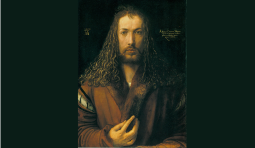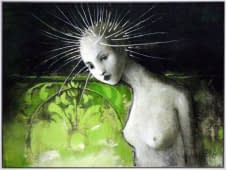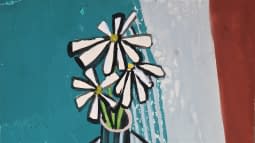What the Geranium and the Alphorn Have to Do with Visual Art
Romanticism: Art, Nature and the Sublime in the Alps
The Romantic era, which lasted from the end of the 18th to the middle of the 19th century, had a profound impact on art, literature, music and the general world view in Europe. At the centre of Romanticism was a turn to nature, the pursuit of originality and the ideal of a simple, rural way of life. These values are clearly reflected in the way both geraniums and the alphorn gained importance in the Bernese Oberland and the Alps during this period.
One of the most famous representatives of this era is Caspar David Friedrich (1774-1840). His works ‘The Wanderer above the Sea of Fog’ (1818) and ‘Chalk Cliffs on Rügen’ (1818) are world-famous. His works epitomise the romantic longing for untouched nature and the sublime. They often show solitary figures gazing out into the world, surrounded by majestic landscapes. These depictions reflect Romanticism, which regarded nature as an expression of the divine and the infinite. Although Friedrich did not paint Alpine motifs, his attitude corresponds to what the alphorn and geraniums symbolise: a deep connection to nature and the simple way of life.

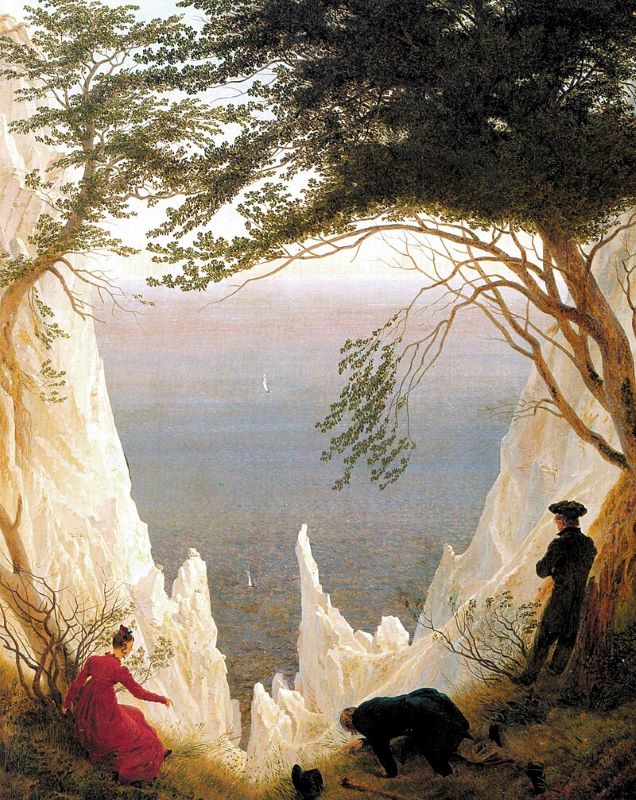
Joseph Anton Koch (1768-1839) is another representative of this era. He painted many landscapes that emphasise the sublime and powerful nature. His works ‘The Schmadribach Falls’ (1822) and ‘Heroic Landscape with Rainbow’ (1805), in particular, show the wild beauty of the Swiss Alps and epitomise the Romantic idea of the sublimity of nature. These works are directly linked to the symbolism of the alphorn, which represents the voice of the Alps, and to the geraniums, which embody the harmonious integration of human settlements into nature.
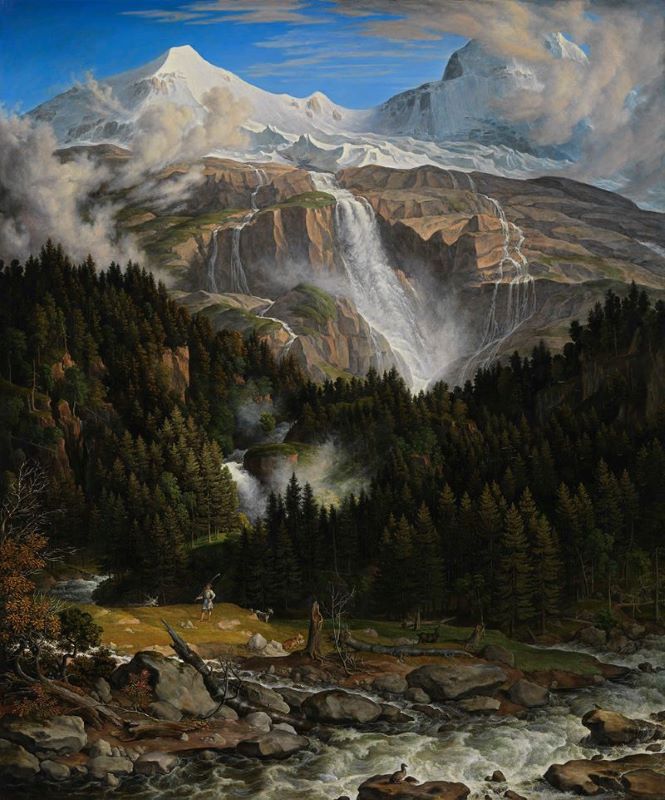
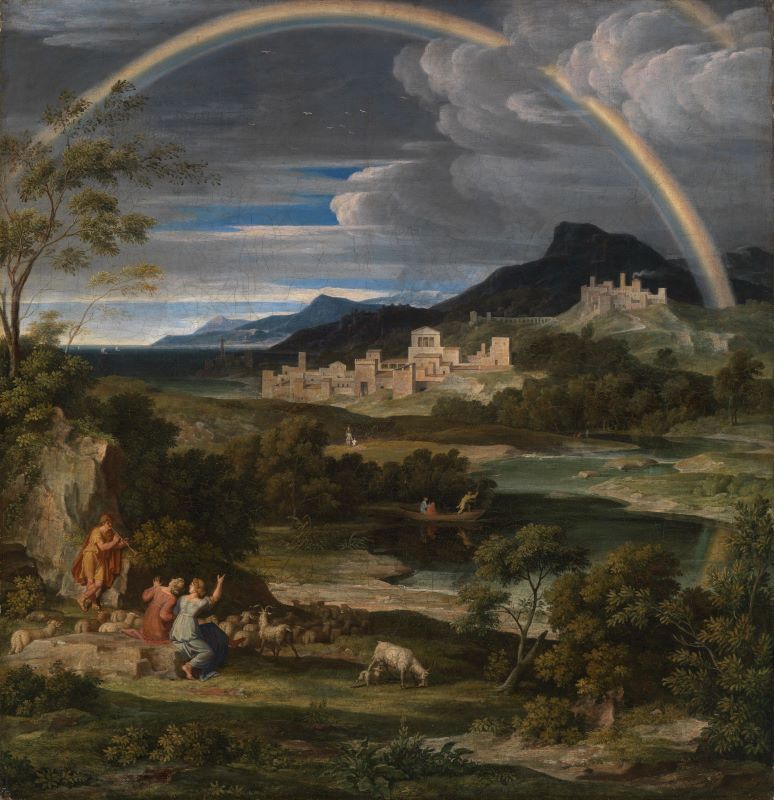
Rudolf Koller (1828-1905), a Swiss painter, is known for his detailed and atmospheric depictions of rural life in Switzerland. His paintings often depict animals and farmers working in the idyllic Alpine landscape. His works reflect the romantic ideal of a simple life close to nature, which is also expressed in the tradition of geraniums and the alphorn. Koller emphasises the harmony between humans, animals and nature, similar to the symbolism carried by the alphorn. His most famous work is ‘Gotthardpost’ (1873).
A wonderful work from this period can be discovered on art24. The painting ‘Landscape with animal and figure staffage and view of Küssnacht am Rigi and Lake Lucerne’ by Anton Winterlin (1805 - 1894).
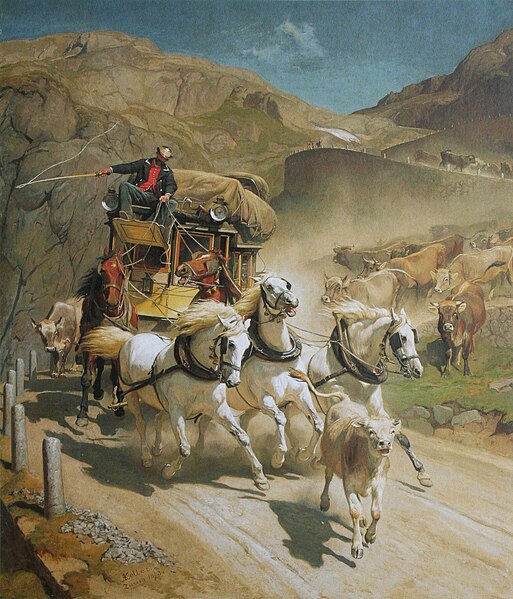
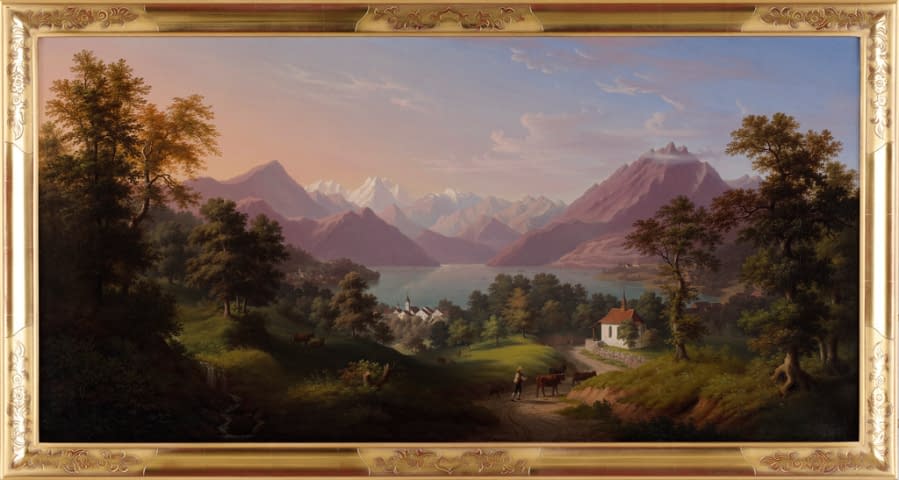
More works from the Romantic period can be discovered on art24.world. Simply use the ‘Romanticism’ filter and you will find incredible works in this style.
Geraniums in the Context of Romanticism
In the Romantic period, country life was idealised and a new appreciation for the beauty and simplicity of nature emerged. The Romantics longed for a life in harmony with nature and far away from the industrialisation that was increasingly shaping the cities. In this era, the tradition of decorating houses with flowers experienced a particular heyday.
The geranium, with its bright colours and robustness, became a symbol of the romantic idea of the rural idyll. It still adorns the balconies and windows of chalets in the Bernese Oberland today and contributed to the creation of an image of rural unspoiltness and harmony. The spread of geraniums in this region can therefore also be seen as an expression of the Romantic aesthetic, which emphasises the connection between people and nature.
But where does the geranium come from? Geraniums, especially ‘pelargoniums’, have travelled a fascinating journey before becoming an integral part of Alpine culture. Originally from South Africa, these plants were brought to Europe by Dutch and British sailors in the 17th century. They initially became popular in botanical gardens and with wealthy collectors before reaching rural regions such as the Bernese Oberland in the 18th and 19th centuries thanks to trade relations and improved transport options.
In the 19th century, the tradition of decorating houses with flower boxes began in the Bernese Oberland. These boxes were often planted with bright red geraniums, which were perfectly suited to the Alpine climate due to their resilience and long flowering period. Geraniums quickly came to symbolise the idyllic countryside and the close ties to home in the Alps. Today, the red geraniums on the wooden balconies of the chalets have become a typical and unmistakable image for the region, which also attracts tourists and contributes to the regional identity.
Plants are always witnesses to colonial history and the migration from one location to another. The artist Uriel Orlow sheds light on the relationship between geraniums and migration from an exciting angle.
The Alphorn in the Romantic Period
The origins of the alphorn can be traced back to ancient times, when similar wind instruments made from natural materials such as animal horns were widely used in Europe. The alphorn as we know it today was first mentioned in written sources in the 16th century. It was used by shepherds in the Alps as a means of communication to send signals over long distances to call the animals together.
Over time, the alphorn developed from a purely practical instrument into an integral part of Alpine musical culture. In the 18th and 19th centuries, it was integrated into folk music and experienced a rediscovery during the Romantic period as a symbol of the purity and originality of the Alps. In Switzerland in particular, where the alphorn is now regarded as a national symbol, it has a central cultural significance. It is played at official occasions, tourist events and in modern music, which carries its significance far beyond the Alps.
For romantics, the alphorn symbolised the originality, simplicity and purity of the Alpine way of life. It embodied the unspoilt nature of the Alps, the simple life of the shepherds and the deep connection with the landscape.
Romanticism as a Connecting Element
Romanticism played a decisive role in anchoring both geraniums and the alphorn in Alpine culture. Both symbols reflect the romantic longing for a life in harmony with nature. While the geranium embodied the aesthetic ideal of the rural idyll, the alphorn represented the musical expressiveness of the natural and original way of life of the Alpine inhabitants. Overall, Romanticism helped to consolidate the significance of these cultural symbols and establish them as essential components of regional identity in the Bernese Oberland and the Alps. To this day, both geraniums and the alphorn carry the Romantic idea of closeness to nature, simplicity and authenticity.

